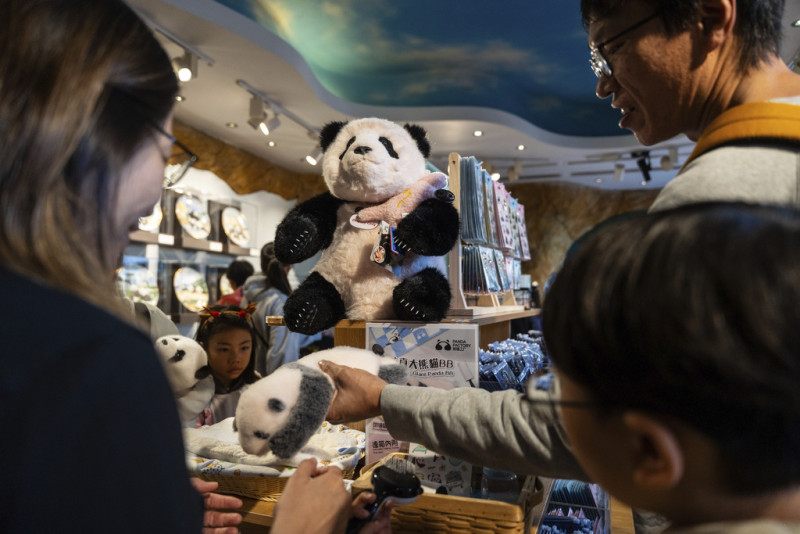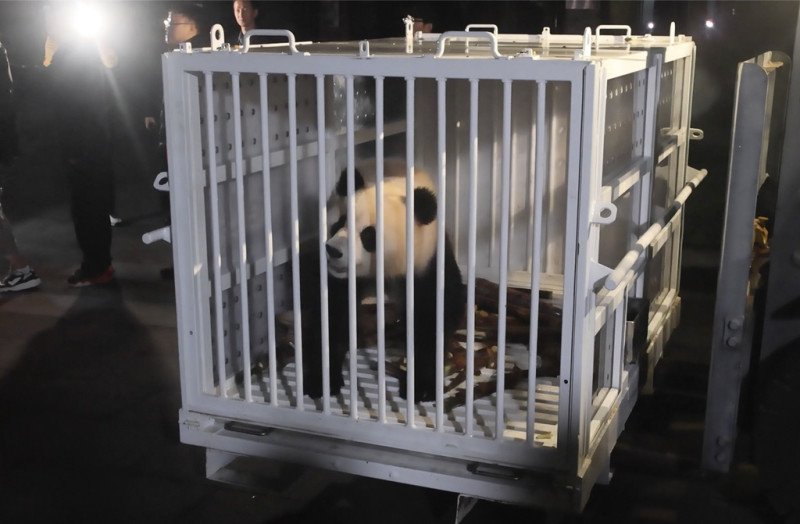More and more Chinese do not want to borrow everything from other countries and especially the USA – And this is not in the interest of Beijing and its diplomacy
China is the land of pandas. The adorable black and white teddy bears are the national animal and the people love to see and care for them. But as love knows no borders, animals are not only worshiped in their country, but all over the world. And Beijing has exploited this through diplomacy, always sending to many countries to build ties.
However, the Chinese’s over-the-top love of everything is causing a headache for the government today as it tries to balance the scales between using the animals for diplomatic purposes and the Chinese’s demand to protect their “national treasure” at all costs.
While many Chinese are proud to share everything with the planet, there are growing voices of those who are staunchly opposed to sending their bears to the US and other “unfriendly countries” because they fear they are mistreating the animals.
Already, last year a group of activists protested strongly outside the Dujiangyan Panda base, the temporary home of the two pandas sent to the US in secret. Also, panda fans have targeted researchers and scientists involved in the panda breeding program in China.
Panda was not always the national symbol of China
Pandas once ranged across a vast swath of China, along with parts of northern Myanmar and Vietnam, but human intervention and climate change have shrunk the bears’ habitat. The giant panda lives in a few mountains in central China, mainly in Sichuan province, but also in Shaanxi and Gansu provinces.
Today, Sichuan is known as the “homeland of pandas”. The mountainous province has a network of nature reserves and panda breeding centers, all built in recent decades as China tries to save their population.
The city’s panda breeding base is the largest in the country, home to more than 240 bears, a third of the world’s captive panda population. And the area attracts up to 11 million visitors annually.
“It is a symbol of China. All Chinese people want to see it up close.” states a visitor to CNN, who 1,300 kilometers and lined up at 6 in the morning to see everything.
But the giant panda was not always an emblem of the Chinese nation. For much of history, the Chinese have had the dragon, tiger and crane as their national symbols.
The panda only emerged as a national symbol long after the founding of the People’s Republic in 1949.
Unique, lovable and free of historical baggage, the black and white teddy bear he was considered an ideal symbol for the communist nation to shape the image and identity. Even then, it took years to gain widespread recognition and worship in a poor country.
Liu Xuehua, a conservationist who has dedicated her career to preserving panda habitat, didn’t know everything.
“The media wasn’t that developed, we spent a lot of time studying at school and there weren’t that many zoos in the provinces,” he recalls.
Today, it is almost impossible for a child in China to grow up without knowing everything – the “national treasure” brought back from the brink of extinction. Teddy bears appear in cartoons, textbooks, toy stores, and can now be seen in zoos in almost every province in China.
Panda diplomacy and challenges
Over the years, everything entered diplomacy. For more than half a century, Beijing has been sending the charismatic animals abroad to strengthen alliances, mend estranged ties and court new partners.
All have been a cornerstone of the US-China deal since a pair of bears traveled to Washington in 1972, following President Richard Nixon’s trip to the communist nation during the Cold War.
However, relations between the US and China, the world’s two most powerful nations, have fallen to their lowest level in decades due to growing competition in technology, military, geopolitics.
Panda diplomacy was a small bright spot in an otherwise dark landscape. Last June, China sent the first pair of pandas to enter America in 21 years to the San Diego Zoo.
A second pair, Bao Li and Qing Bao, made their public debut last Friday at the Smithsonian’s National Zoo after traveling to Washington in October.
However, even this rare bright spot in the relations of the two countries could not to it completely escapes the shadow of mistrust and hostility that exists in politics. And especially today, with his return Donald Trump in the White House and the threat he brings for a trade war between the US and China.
Concerns about the welfare of bears abroad are growing because of it climate that exists between the US and China, while there are also claims that American zoos have mistreated their “national treasures”.
For this reason, the transfers of everything that has been done abroad have been planned in strict secrecyaway from the crowds of tourists and “extreme panda fans”.
The Chinese public’s growing love affair with bears has also brought greater attention to the treatment of pandas in breeding centers and zoos within China. Some panda advocates have criticized the use of electro-ejaculation, a common technique for collecting sperm from male pandas.
And protests over breeding techniques have made research work more difficult as well. On the other hand, supporters of the panda breeding program in captivity say it is vital to keep the species from going extinct and that the ultimate goal is to return pandas to the wild.
For now, the Chinese government remains committed in reproduction always in captivity and to lending them in foreign zoos.
The government has also emphasized that it will not tolerate public opposition to panda diplomacy, which is why they have made moves to limit national reactions. In December, police in Dujiangyan arrested two people for spreading false rumours about the abuse of pandas in the US and “inciting backlash” in the panda exchange program.
Since last May, Sichuan authorities have arrested four groups of “extreme” animal rights activists accused of defaming and harassing Chinese panda experts.
Authorities have stepped up efforts to counter negative views of the panda exchange program, although not everyone is convinced. A visitor to the Beijing Zoo called everything a “must-have” for China. Asked what he thinks about lending money abroad, he replied: “The less we send, the better.”
Edited by: Anastasia Kitsikosta
Source: Skai
I have worked as a journalist for over 10 years, and my work has been featured on many different news websites. I am also an author, and my work has been published in several books. I specialize in opinion writing, and I often write about current events and controversial topics. I am a very well-rounded writer, and I have a lot of experience in different areas of journalism. I am a very hard worker, and I am always willing to put in the extra effort to get the job done.












